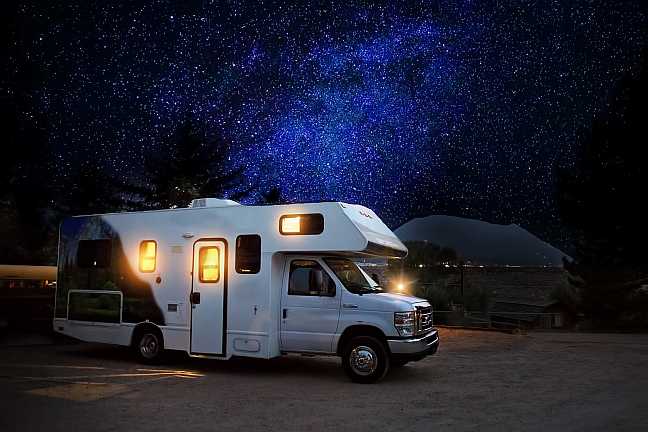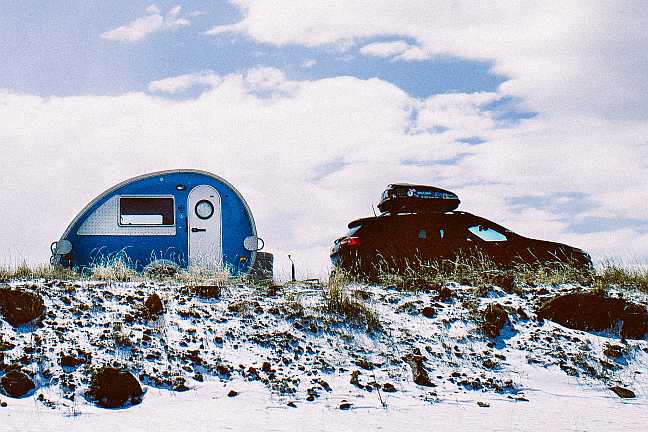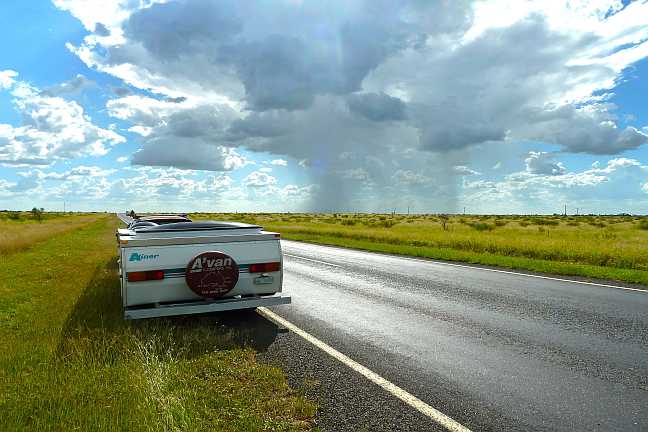The terms motorhome and RV (and camper and trailer too) are used quite interchangeably.
It gets confusing for people who are new to this world.
Difference between Motorhome and RV? RV is short for a recreational vehicle. This might be a motorhome, a trailer, or a camper. A motorhome is an RV that has an engine, a cab, and is driven from destination to destination – usually, a Class A, B, or C.
Campers or trailers also might be referred to as an RV, but they must be towed by a car or truck because they don’t have an engine of their own.
While the RV abbreviation is used interchangeably, it’s important to understand the differences between the various options for getting away from the city and enjoying the outdoors.
Read Also: Camping and RVing
What is an RV?
An RV is a mobile vehicle that is used to allow recreation to other places, parks, and staying overnight in them.
They’re a mobile solution designed in part to avoid needing to pay for motels or hotels which are expensive on a nightly basis.
The recreational aspect includes the ability to sleep inside, usually with a kitchenette to prep & cook meals, and a relaxation area too.
This can happen in a motorhome like a Class A, B, or C, but equally, you might own a truck and tow a fifth-wheel trailer, toy hauler, a small teardrop camper, or use a truck camper with a sleeping space built above the chassis.

Here are some of the different RVs available to choose from:
- Class A, B, or C Motorhomes
- Truck Campers
- Campervan
- Toy Hauler RV
- Campers (towable)
- Fifth Wheel Trailer
As the market grows, there are more subtypes and variations.
For instance, there are now micro campers as well as tiny campers and more standard-size ones. This is being propelled by the trend towards tiny houses and living smaller.
Read Also: Deeded RV Lots
Motorhome RVs: What Are These Class A, B, or C Models?
A motorhome is a self-contained, self-propelled, all-in-one solution for mobile living.
It’s built on a single chassis and has an engine, and a cab to sit while driving the vehicle.
Behind the cab, inside the same space is the internal part of the RV itself. Each Class of motorhome – which is indicative of its rough size and dimensions – includes one or more sleeping areas, a kitchen including a refrigerator, some storage space, and a table to sit at for mealtimes.
It’s a simple solution. You take your home with you. When needing to break camp to go into town for supplies, everything comes along.
Read Also: Leaving Pets in RV
Class A RV / Motorhome
Class A is the largest consumer motorhome currently available. They’re built on top of tractor-trailer platforms.
It’s usually 45 feet in length or thereabouts. They have an expansive space internally to accommodate a whole family in comfort and style. Long-stay RVers often prefer them when they don’t move around much.
They are known in the community as “diesel pushers” because they aren’t as economical with fuel consumption. Nevertheless, they’re popular as a towing vehicle for other RVs, cars, trailers, or boats on a trailer.
What they give you in luxury, you lose in mobility. Extra parking space is required. They’re not the kind of RV that’s easily parked in the lot at Walmart either overnight or to go shopping.
Also, they aren’t cheap. They start at around $50,000 new going well up into the 6-figures for the most luxurious models.
Read Also: RV Dump Station Cost
Class B RV / Motorhome
Class B is the most compact motorhome that supports a solo traveler or a couple. Another couple may come to visit and sit at the dinette to enjoy a meal, but a Class B isn’t large enough to accommodate them too.
The smaller size is convenient making it easier to find parking spaces at tourist attractions before moving on.
The fuel economy is far better than a Class A but similar to a Class C. The improved gas mileage makes long-distance travel far more affordable.
Class C RV / Motorhome
Class C is a motorhome that finds a happy compromise between the space-limited Class B and the expansive Class A.
This RV is longer which allows for more internal living space. The bedroom sleeping arrangement is more spacious and comfortable.
There are also kitchen cooking facilities and a more expansive seating area.
The gas mileage isn’t much lower than with a Class B because the C’s are produced to be light to avoid being a drag on the motoring cost per mile.
The Class C is easy to spot versus a Class B because it almost always has a sleeping area above the cab, much like with a long-haul truck. There’s usually a bunk up there to climb up and sleep in.
Another larger sleeping area is at the back of the motorhome.
Read Also: How Long Does a Travel Trailer Last?
Truck Campers
A truck camper is a pickup truck or other similar vehicle with a camper unit attached at the back.
This type of camper is either bolted or strapped onto the bed of the truck to secure it.
This RV type usually has a cabover that extends over the cab and provides a sleeping area or extra storage space.
The interior space may include a washroom, shower, kitchenette, and/or seating area.
Truck campers may have a pop-up camper style, have hard sides, or use a toughened canvas material. They are removable when not needing to use the truck as a camper too.
It’s an adapted all-in-one RV solution that’s affordable, convenient, and minimalistic.
Campervan
A campervan (sometimes called a camper van) is a specially manufactured line or ad hoc living space created by the owner.
Some are produced by major vehicle manufacturers who take their existing van design and create a livable version with a bed, table, kitchen, and other facilities inside.
There’s also a growing interest in van life where people purchase new or previously owned commercial vans, strip them out, and then create their living space.
Technically, these are drivable and have living areas inside, so we include them here for completeness.
However, they’re not usually referred to as RVs. This is mainly because they don’t have similar specifications, installed appliances, or other features nor do they resemble the other RV options available.
The appeal of campervans is a growing community of van lifers who can set up this permanent lifestyle choice less expensively than purchasing a conventional RV.
Stealth camping is growing in popularity through its use of tinted windows and discrete extras like a MaxxAir Roof Vent Fan [affiliate link] or solar-powered system fitted to the roof. The dimensions of the typical campervan mean it usually fits cooperatively into regular parking spaces.
ⓘ If you click this link and make a purchase, we earn a commission at no additional cost to you.
Toy Hauler RV
A Toy Hauler motorhome is in a special category of its own.
It is usually a longer RV similar in size to a Class A (though there are ones that better resemble a Class C) designed to live in and store toys.
The toys might be ATVs, dirt bikes, 4x4s, go-karts, motorbikes, and other ones for off-road adventures.
The terminology with toy haulers is a bit messed up.
The majority are self-propelled with a cab, engine, and everything needed to drive them to your vacation spot.
However, they’re sometimes referred to as trailers or campers because they might be closer to a Class A or C and towed behind another vehicle.
There is a living area, a sleeping area, and kitchen facilities near the front.
The beds may fold out of the way to allow the interior space to be used for additional vehicles inside the toy hauler.
Otherwise, the toys are stored at the back with an off-ramp to easily unload them.
It’s also possible to use this RV/camper as a garage with space for parts, tools, etc.
Read Also: 11 Safe Places to Park Your RV Overnight for Free
Campers (towable)
The campers in this section are sometimes interchangeably referred to as trailers.
In either case, they are towable with a hitch set up on a truck or other vehicle that has the pulling capacity and horsepower to get up steep hills.
Given that most include the option to use them as overnight accommodation, they’re considered RVs even though they may be unpowered and require a towing vehicle like a car, truck, or minivan.
Trailers
A trailer is big enough to pull heavy weights and is towed to its destination. Oftentimes, a camper is built on top of the trailer, and then it’s referred to as a camper.
A trailer is usually only used to store items inside and isn’t livable inside.
With a camper built atop a trailer, it creates a true RV with space for a bedroom, bathroom, kitchen areas, and a dinette.
Bigger campers accommodate multiple people with extra sleeping areas and/or additional living space.
The trailer and camper terms are used interchangeably at times.
For instance, a travel trailer is towable and includes liveable accommodation. Therefore, it’s important to pay attention to the installed amenities, floor plan, and other specifics to understand what you’re looking at.
Additionally, some larger trailers include slide-outs to expand the internal living space when situated at an RV park or long-stay RV park.
Travel Trailer
A travel trailer is towed by a powered vehicle, with a truck.
They come in a variety of floor plans and design specifications. They usually include a kitchen, bedroom, living area, and shower closet.
It depends on the trailer design whether they may be ridden in while being towed or not.
Teardrop Camper/Trailer

The teardrop trailer is extremely compact. It’s designed to be aerodynamic because they’re small enough to tow behind a motorcycle (not a moped).
The interior space is often only spacious enough to fit a single bed mattress and not much else. Occasionally, they’re fitted out with a mini kitchen at the rear to cook outdoors.
The attraction of these trailers is the sticker price which falls between $8,500 and $16,000. Previously owned teardrop trailers would be even more affordable.
Micro Campers or Small Campers
Small or micro campers have begun appearing now.
These are chasing the tiny house trend for people who wish to travel around but live a minimalistic lifestyle.
This type of RV runs the gamut between custom-converted vans to converted minivans but might also be towable campers in their own right. They may or may not have pop-up elements.
These are called micro campers because they’re too small to be referred to as campervans.
Read Also: Walmart RV parking
Foldable Campers
The foldable campers are more popular in Europe compared to the USA.
They are towable with a low-rise trailer platform and an erectable pop-up camper element.
This element has a roof that is supported by four walls and metal supports. There’s usually a mechanism that lifts the camper on springs.
Examples of these include the Gobur folding caravan and the A-liner models.

Fifth Wheel Camper
A fifth-wheel camper is an elongated trailer that’s pulled by a pickup truck (in most cases).
It requires specialized towing equipment including a coupling just for fifth wheels where the mounting system sits inside the truck’s bed.
Because of this, when towing, the truck’s bed cannot be used for additional storage.
The fifth wheel is not far behind the size of a Class A motorhome. It has all the modern conveniences that a motorhome has.
It can also be positioned at an RV park, unhitched, and then the truck can be driven into town for supplies.
Fifth Wheels are often luxuriously appointed with expansive bedrooms, walk-in closets, full kitchen facilities, extra storage inside and out, and ample living space too. They also typically include washrooms, showers, etc.
Remember, any recreational option that provides a living space to sleep overnight (and usually to cook too) is referred to as an RV. It’s a matter of specifics. They each have their uses.
And as for motorhomes, they’re self-powered vehicles that include accommodation inside. Simple as that!

